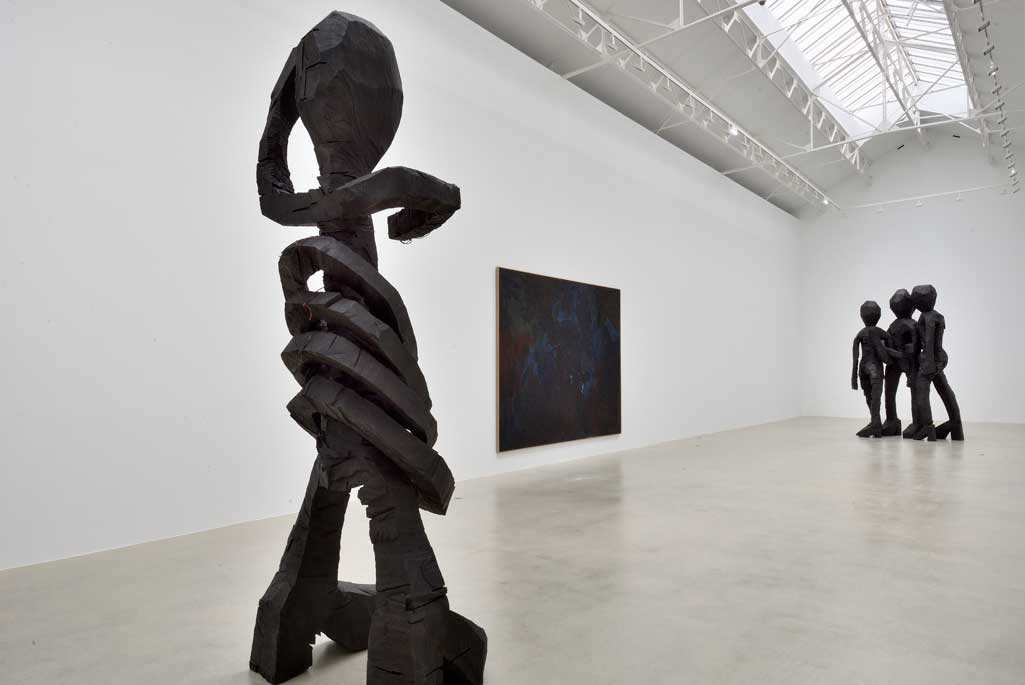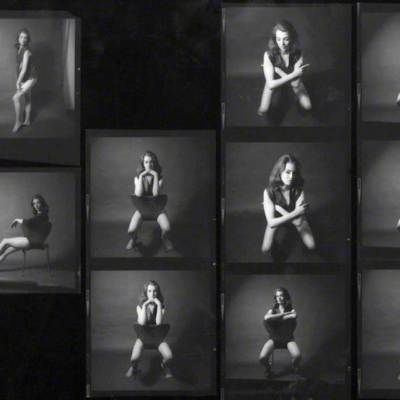‘Le Côté Sombre’ (‘The Dark Side’) brings together Georg Baselitz’s latest painting and sculpture at Thaddaeus Ropac’s sprawling new space in Pantin, a couple of miles north east of Paris.
The monumental sculptures, cast in bronze after wood carvings, are less violent than Baselitz’s previous works. His signature axe and chainsaw cuts are not softened – the rough surfaces reveal the creative process of angular hacking and gauging. But their black patina gives them a slick gloss, which befits their modish surroundings.
BDM Gruppe is the most striking sculpture of the new series, three black faceless figures, androgynous but for some crudely sculpted high-heeled shoes. The inspiration (and title) come from Baselitz’s childhood memories of the parading Bund Deutscher Mädel, the girls’ section of the Hitler-Jugend (Hitler Youth), in his village of Deutschbaselitz, Saxony. As with much of his work, the grim spectre of Germany’s recent history is ever present. Baselitz’s primitive technique is testament to his roots, drawing on Volkskunst of Saxony, as well as art brut and African sculpture from his own private collection.
The same sculpture was recently on display in the John Madejski Garden of the Victoria and Albert Museum and comparisons drawn with Antonio Canova’s Three Graces. BDM Gruppe is The Three Graces in negative. We recognise the three standing figures with arms intertwined, but instead of the graceful, smooth white marble of Canova’s sculpture, they are clunky, jet black textured giants.
The idea of the negative, the inverted, is shot through Baselitz’s oeuvre since he first produced an upside-down canvas in 1969. In his new series, Black Paintings, the idea of the negative translates into the desire for an entirely black canvas: Baselitz claims to ‘dream of painting an invisible picture’.
Black Paintings give us more than opacity. In some, colour is mixed into the black, which might recall a child’s experiment to see what colour you get when you mix all the colours together (answer: blackish). In certain lights the form of an eagle emerges, perhaps turned upside down, perhaps nose-diving into gloom. The contrast between eagle and surroundings is an almost imperceptible change of texture, a glossy shape emerging from a matt canvas of broad, sweeping strokes. In places, touches and streaks of white pierce the canvas. Between figurative and abstract, the paintings are reduced to subtle shifts in colour and texture. They are sombre, but meditative rather than anguished.
September’s first wave of vernissages in Paris revealed the traditional slew of medium sized oeuvres packed into small white cubes. Baselitz’s new works would not fit through the door. But in Ropac’s new, 2000 square-metre space they are strangely diminished, dwarfed by the new trend for über-galleries on the city peripheries, designed to showcase large-scale trophy art.
‘Georg Baselitz: The Dark Side’ is at the Galerie Thaddaeus Ropac: Paris Pantin until 31 October 2013.




